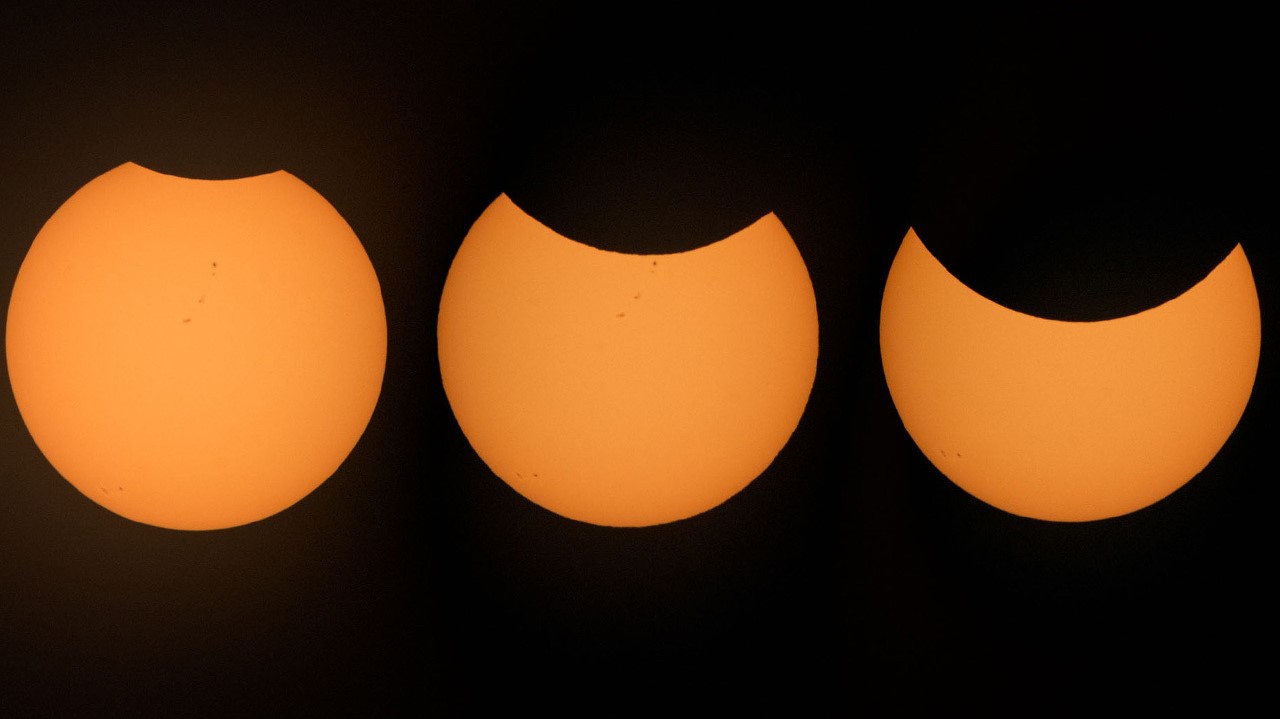The next solar eclipse will be a partial eclipse in March 2025. Here's what you need to know.
Next up on the timeline of solar eclipses is a partial one on March 29, 2025.

It'll be about six months before skywatchers are treated to another solar eclipse — during which only part of the sun will again be obscured from view.
On Oct. 2, an annular solar eclipse was visible from areas in the Southern Hemisphere, including in remote parts of Chile and Argentina. This type of eclipse occurs when the moon passes between Earth and the sun, but does not completely cover the sun's disk because it is at its farthest point from Earth. Therefore, the moon appears smaller than the sun, creating what looks like a "ring of fire" around the moon when viewed from Earth.
Similarly, the next solar eclipse will also only block part of the sun. On March 29, 2025 a partial solar eclipse will be visible in areas of Europe, Asia, Africa, North America, South America and the Atlantic and Arctic Oceans, according to NASA.
Related: These solar eclipse 2024 photos from our readers are absolutely amazing (images, video)
We experience different types of eclipses based on the alignment and position of the sun, moon and Earth. A partial solar eclipse occurs when the moon passes between the sun and Earth, but the trio are not perfectly lined up (like they are during a total solar eclipse), allowing sunlight to peak out from behind the face of the moon.
A partial solar eclipse can also be seen by viewers located outside the path within which the moon's shadow completely falls during a total or annular solar eclipse. When only part of the sun is covered by the moon, it creates a crescent shape seen by viewers on Earth.
The partial solar eclipse on March 29, 2025 begins at 4:50 a.m. EDT (0850 GMT) and ends at 8:43 a.m. EDT (1243 GMT). It will reach its maximum phase at 6:47 a.m. EDT (1047 GMT), with a sliver of the sun peaking out from behind the moon, according to TimeandDate.com, where you can also find a full list of locations within the path of the eclipse's shadow.
Breaking space news, the latest updates on rocket launches, skywatching events and more!
Because part of the sun is still visible during a partial solar eclipse, it is unsafe to look directly at the sun without solar eclipse glasses designed for solar viewing. You can learn more about that with our guide on how to observe the sun safely.
It is also important to equip cameras, telescopes and binoculars with a solar filter at all times. Check out our guide on how to photograph a solar eclipse for more tips and tricks in preparation for March's partial solar eclipse.
Be sure to check back at Space.com for more details on viewing times and locations closer to the partial solar eclipse on March 29, 2025.

Samantha Mathewson joined Space.com as an intern in the summer of 2016. She received a B.A. in Journalism and Environmental Science at the University of New Haven, in Connecticut. Previously, her work has been published in Nature World News. When not writing or reading about science, Samantha enjoys traveling to new places and taking photos! You can follow her on Twitter @Sam_Ashley13.
